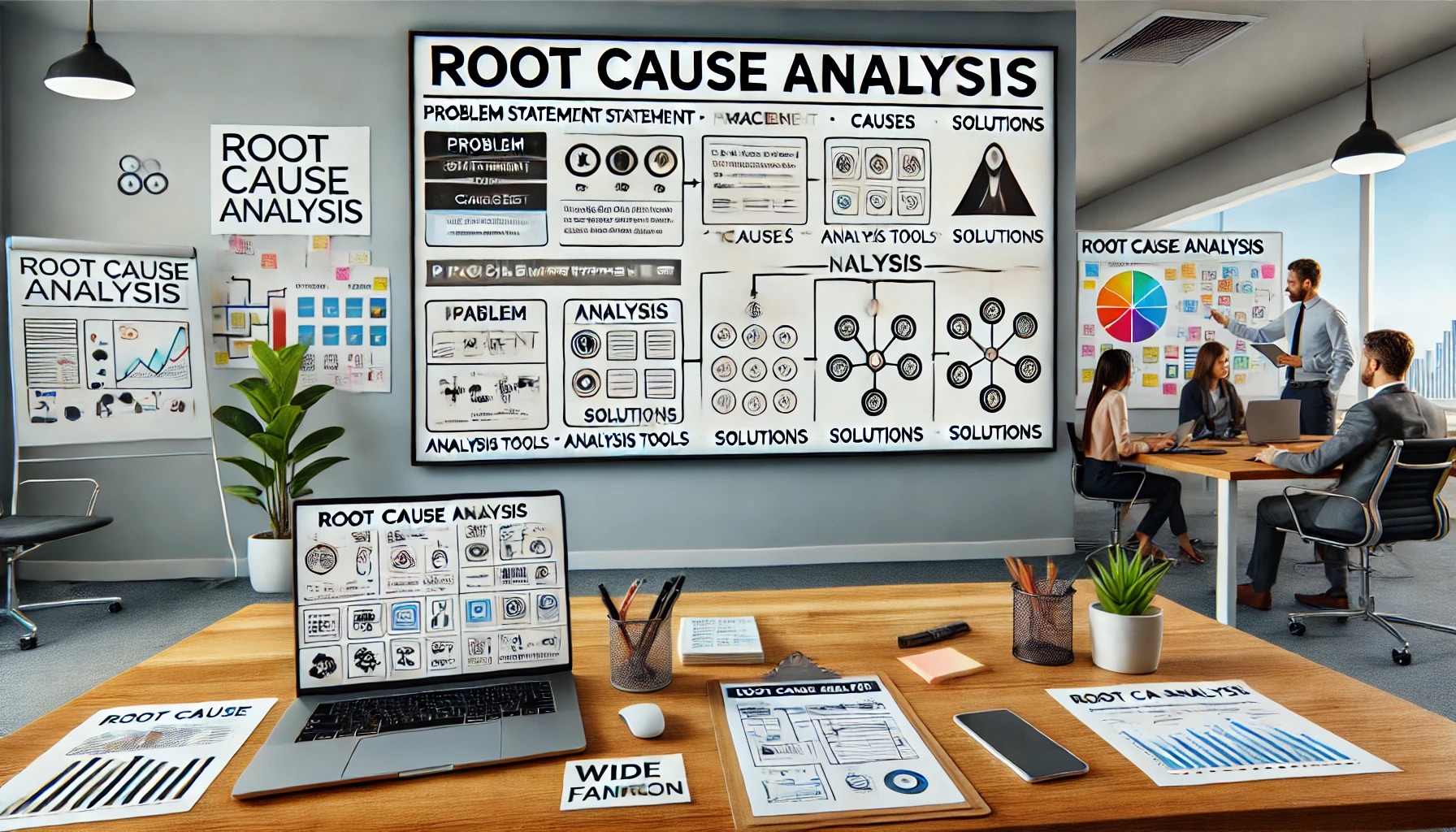Problems arise in every workplace, no matter the industry. The key to maintaining productivity and ensuring efficiency lies in identifying the root causes of these problems and implementing solutions to prevent their recurrence. This systematic approach is called Root Cause Analysis (RCA). It's a vital tool for understanding the underlying reasons behind a problem, rather than just addressing the symptoms.
In this article, we will guide you through the essentials of root cause analysis, explain its importance, and provide practical templates to streamline the process. Whether you're managing operations, leading a team, or running your own business, understanding RCA is crucial for fostering continuous improvement and ensuring long-term success.

What Is Root Cause Analysis?
Root Cause Analysis (RCA) is a methodical approach used to identify the root cause of an issue or problem, rather than addressing only its immediate symptoms. By digging deep into the "why" behind an issue, RCA enables organizations to develop targeted solutions that prevent similar problems from occurring in the future.
Key Elements of Root Cause Analysis
- Identify the Problem: Define the issue clearly and concisely.
- Analyze the Cause: Use tools like diagrams or structured questions to uncover contributing factors.
- Implement Solutions: Create actionable strategies to resolve the root cause.
- Monitor Results: Track the effectiveness of implemented solutions to ensure lasting success.
Why Is Root Cause Analysis Important?
RCA provides a structured framework for problem-solving, offering a range of benefits for businesses and individuals:
1. Long-Term Solutions
By addressing the root cause, RCA ensures that problems are solved at their core, reducing the likelihood of recurrence.
2. Improved Productivity
With fewer recurring issues, teams can focus on their work instead of repeatedly addressing the same problems.
3. Cost Savings
Identifying and fixing the root cause prevents unnecessary expenses associated with temporary fixes or repetitive errors.
4. Enhanced Team Morale
When issues are resolved effectively, employees feel supported and more confident in their work environment.
5. Strategic Decision-Making
RCA provides actionable insights that help leaders make informed decisions based on data and logic.
Key Techniques for Conducting Root Cause Analysis
1. The "5 Whys" Technique
This simple yet effective method involves asking "Why?" five times to drill down to the root cause of a problem. For example:
- Problem: The machine stopped working.
- Why 1: The motor overheated.
- Why 2: The cooling system failed.
- Why 3: The maintenance schedule was not followed.
- Why 4: There was no assigned maintenance technician.
- Why 5: Budget cuts reduced the maintenance team.
2. Fishbone Diagram (Ishikawa Diagram)
Also known as the cause-and-effect diagram, this tool visualizes all potential causes of a problem, categorized into major factors such as personnel, processes, or equipment.
3. Failure Mode and Effects Analysis (FMEA)
FMEA is a detailed approach that identifies potential failure points in a system, evaluates their impact, and prioritizes them based on severity.
4. DMAIC (Define, Measure, Analyze, Improve, Control)
This Six Sigma methodology provides a comprehensive framework for problem-solving:
- Define the problem.
- Measure the scope and impact.
- Analyze contributing factors.
- Improve the processes.
- Control to ensure sustained success.
How to Conduct a Root Cause Analysis
Step 1: Define the Problem
Clearly articulate the issue, including its impact, frequency, and the areas affected.
Step 2: Gather Data
Collect relevant information through observations, interviews, or reports to understand the problem's context.
Step 3: Identify the Root Cause
Use techniques like the 5 Whys or a Fishbone Diagram to pinpoint the root cause.
Step 4: Develop Solutions
Brainstorm practical solutions that address the root cause and prevent recurrence.
Step 5: Implement Solutions
Put the proposed solutions into action and communicate changes to all stakeholders.
Step 6: Monitor Results
Track the effectiveness of the implemented solutions and adjust if necessary.
Root Cause Analysis Templates
To simplify the process, here are some ready-to-use templates:
1. Basic Root Cause Analysis Template
This simple template focuses on defining the problem, identifying root causes, and outlining corrective actions.
- Best for: Small teams or straightforward issues.
- Download from: TemplateLab.com
2. Fishbone Diagram Template
Use this visual tool to categorize potential causes and pinpoint the root problem.
- Best for: Complex, multifaceted issues.
- Download from: Smartsheet.com
3. Comprehensive RCA Report Template
Includes detailed sections for problem statements, analysis, solutions, and monitoring plans.
- Best for: Large organizations or high-impact problems.
- Download from: TemplateArchive.com
4. DMAIC Template
Offers a structured approach for tackling long-term, strategic issues.
- Best for: Six Sigma projects or continuous improvement initiatives.
- Download from: TemplateLab.com
Best Practices for Root Cause Analysis
- Focus on Facts: Base your analysis on data, not assumptions.
- Collaborate: Involve team members from different departments for diverse perspectives.
- Avoid Blame: Concentrate on finding solutions, not assigning fault.
- Document Everything: Keep detailed records of findings and actions for future reference.
- Review Regularly: Periodically revisit solutions to ensure they remain effective.
Conclusion
Root cause analysis is an indispensable tool for identifying and solving problems at their source. By following a structured approach and leveraging effective templates, businesses can improve efficiency, reduce costs, and foster a positive workplace culture. Remember, solving problems is not just about addressing symptoms—it's about uncovering the "root" and ensuring it doesn't grow back.
Now that you understand RCA, it's time to put this knowledge into practice. Use the techniques and templates discussed here to create a culture of continuous improvement in your organization.
Source: Root Cause Analysis Template - Find the Reason of Your Problems
Check out our latest post: Design the Clearest Timesheet Template for Business